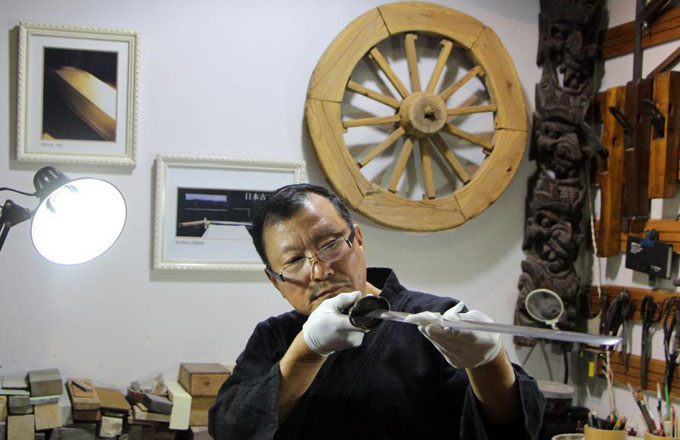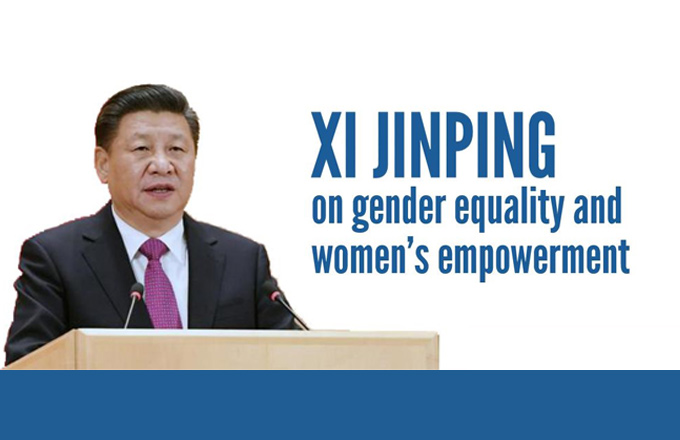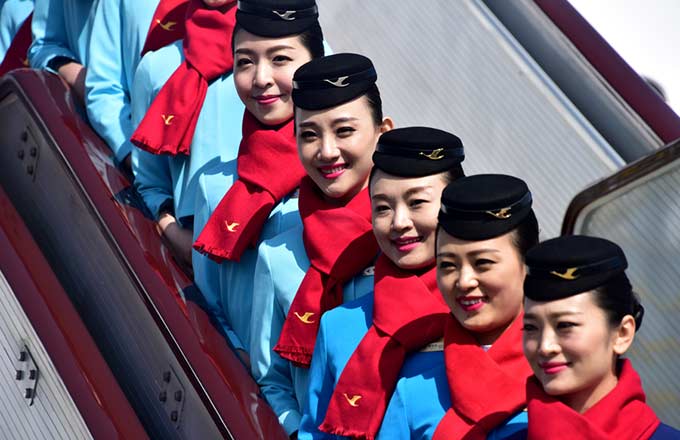Carrier of navy's pride
The first step
Shipbuilding was only the first step in a long, complicated process. In February, Liaoning moved the navy closer to its goal of building a blue-water force by anchoring for the first time in a military port in Qingdao on the coast of the eastern province of Shandong.
The maneuver confirmed that the port, which took four years to build, has the correct logistical capacity for the carrier.
 |
|
Sailors during routine training. |
Zhang Hongwu has been involved with the construction of many types of port since his 1985 graduation from Hohai University in Nanjing. However, the largest facility he had worked on was 40 meters wide, while Liaoning required a much larger port, something Zhang Hongwu and his colleagues had never seen.
"We solved more than 40 technical problems, and finished construction in less than a decade - the average time that a project of this type usually takes," said Zhang.
The differences in logistical capability for regular warships and aircraft carriers are not just quantitative, but "often about the nature of our work", said Wang Yunming, chief of staff at the port's logistics base.
The volumes of oil, water and electricity consumed by Liaoning every day are dozens of times those required by regular warships, but it's not just about volume; when docked, the carrier has to be fed huge amounts of water adapted for specific tasks, such as clean water for drinking and untreated water for cooling purposes.
"It is exciting to see the devices we invented or modified operating on Liaoning now," said Kang Xudong, who adapted a small vehicle to deal with the cable problems caused by the carrier's immense size and high decks.
"Even though some of them can hardly be called huge breakthroughs, they are witness to our knowledge and effort. Their success encourages us to contribute more," he said.
Naval transformation
First Officer Liu said the experience gained during the development of Liaoning can serve as a guide for the transformation of the Chinese navy, from coastal defense to greater responsibilities in deep oceans.
During this year's "Two Sessions", Yin Zhuo, director of the Navy Information Expert Committee of the People's Liberation Army, said the key drivers of the naval transformation are related to the country's economic development, which is directly connected with the oceans. The navy has to protect the security of the country and its economic interests.
"An aircraft carrier can't just stay in port, it has to go out to the deep sea," said Captain Zhang.
In response to questions about the schedule of the ship's combat-capability, he declined to go into detail, but said, "Every test will take Liaoning's combat capability to a higher level. Now, our job is to conduct tests under increasingly complicated weather conditions, with different types of aircraft carrier-borne jets and a more comprehensive logistic capacity."
According to reports, Liaoning completed three sea trials in 2011, the longest lasting 13 days. The trials were intensified and prolonged in 2012; the ninth test lasted 25 days. Beijing said the trials have met the targets for technological research, experimentation and military training.
Meanwhile, Captain Zhang dismissed speculation that Liaoning will not attain full combat capability until China has at least three aircraft carriers, adding that the basic knowledge about aircraft carriers based on the Western experience "is helpful, but also a shackle" for China.
Chinese naval expert Li Jie, a professor at the PLA Naval Military Studies Research Institute, has called on the government to build more carriers, and to own at least three.
"The number of aircraft carriers is decided by a country's strategic purpose, such as the demonstration of power, non-martial military applications or preparing for a large-scale conflict," said Captain Zhang.
The US often stations several aircraft carriers in one region, when one would be enough to deal with a nearby crisis, he added. "So we cannot say a single aircraft carrier does not have combat capability."
Liu agreed with his captain, stating that the Liaoning crew has conducted practice drill and experiments at the same time, something that has rarely been seen before.
"Naval forces usually reserve a specific period for training, but our schedule is always so tight that we have had to break with convention," said Liu.
This urgent approach was necessary because "the Chinese navy needs to reach every place that other countries can reach to support the country's growth. The navy has to be able to compete with any naval force from any country in any area," he said.
"The world has been impressed by the navy's anti-piracy efforts in the Gulf of Aden and in Somalian waters, so the role Liaoning will play will further improve China's influence and lead the direction of its naval development."
Since 2008, China has sent 14 naval task forces on escort missions in the Gulf of Aden and off the coast of Somalia. Still, both Liaoning and the Chinese navy have a long way to go, said Captain Zhang.
"It's only natural that the political commissar and I are under pressure in the face of this task and I dare not make any mistakes," he said. "I hope that I will not fail my country and her people," he added modestly.
Related stories:
From Gangnam to 'Carrier Style'
Female members of Liaoning mark their mark
- China discloses how PLA troops are formed
- Civilians visit Liaoning aircraft carrier
- Civilians visit Liaoning aircraft carrier
- Youth asked to learn from Good Samaritans
- Jet launch inspires 'Carrier Style' craze
- China's first aircraft carrier anchors in Qingdao
- China's aircraft carrier anchors in military port


















